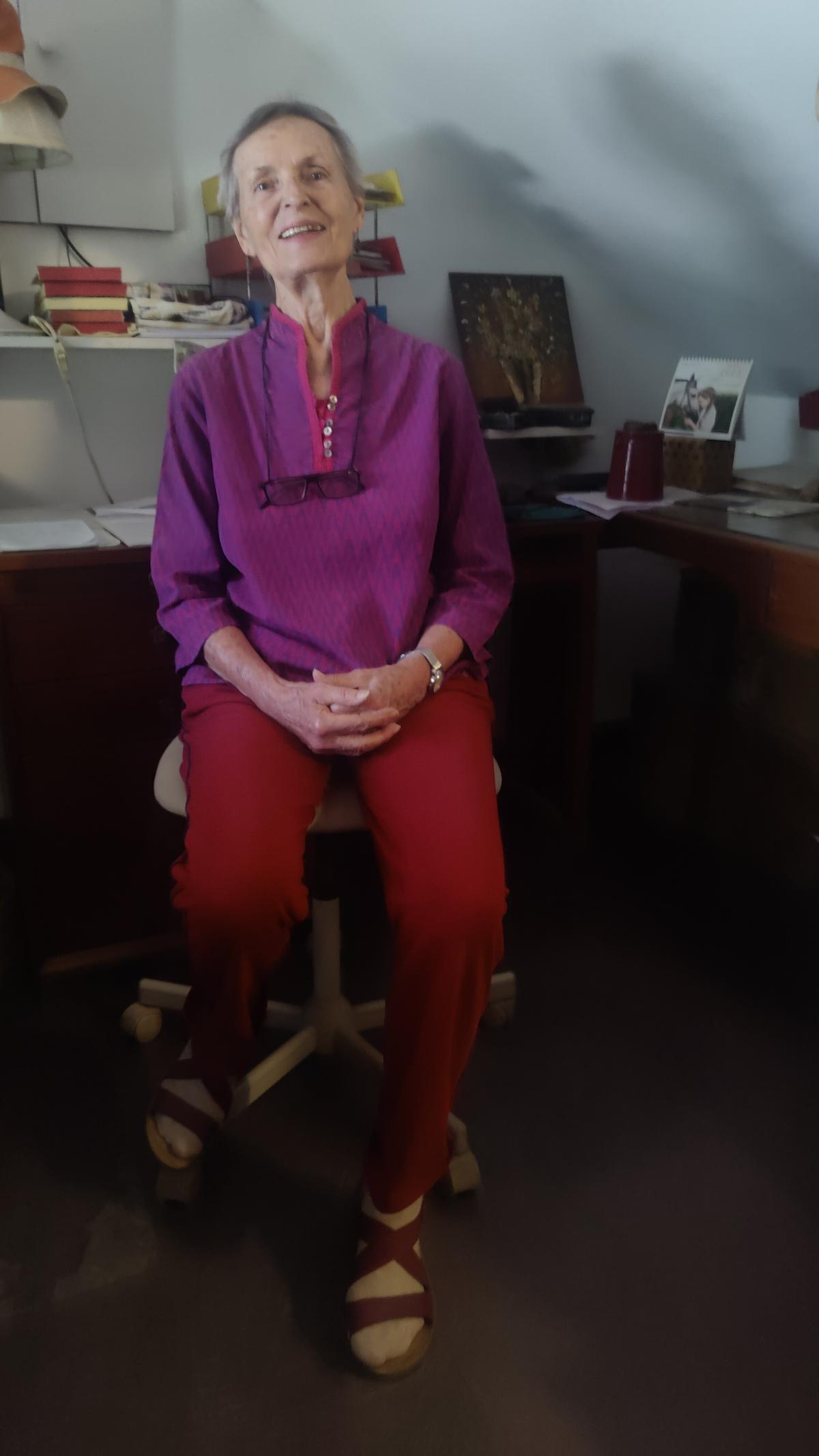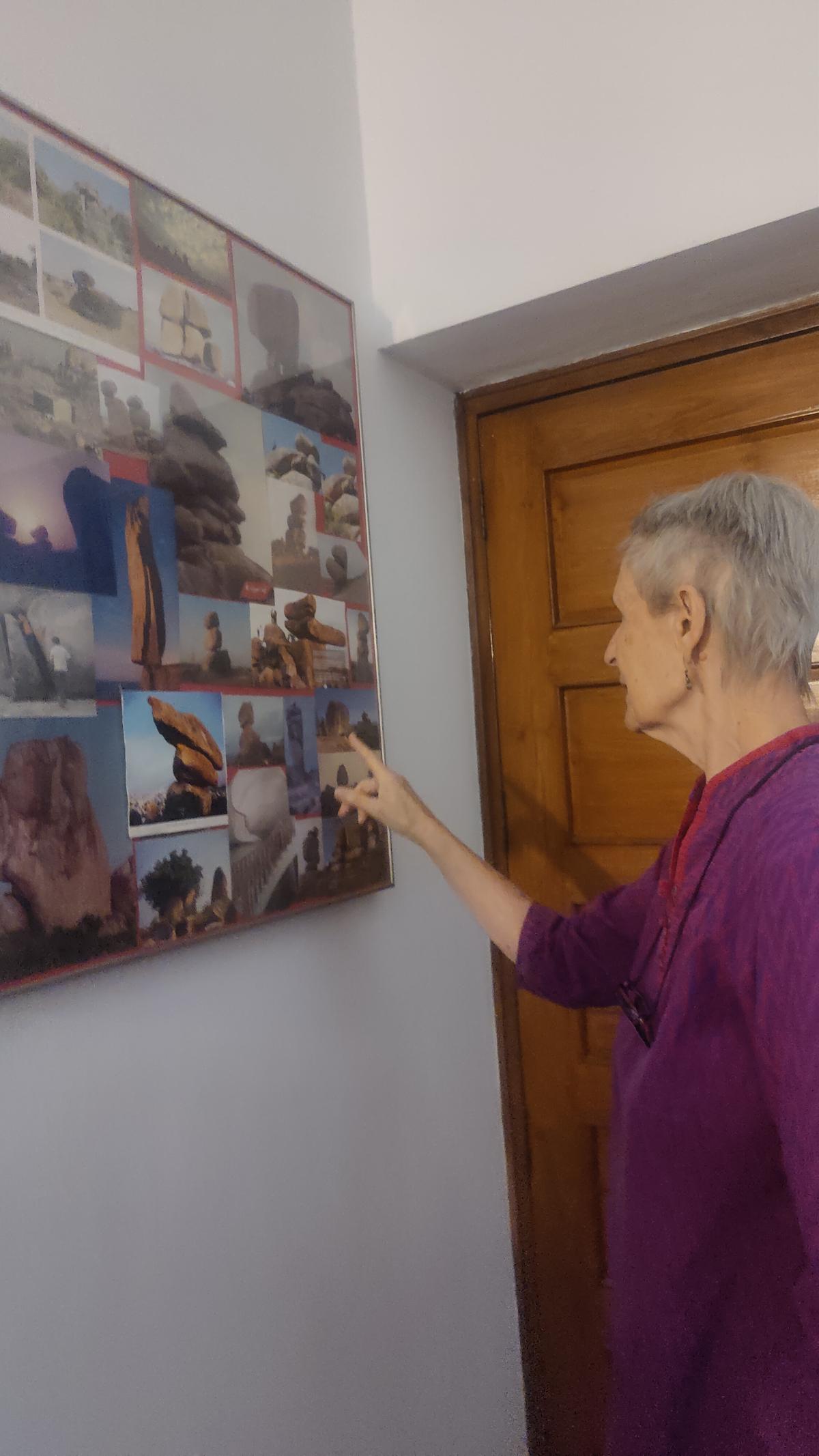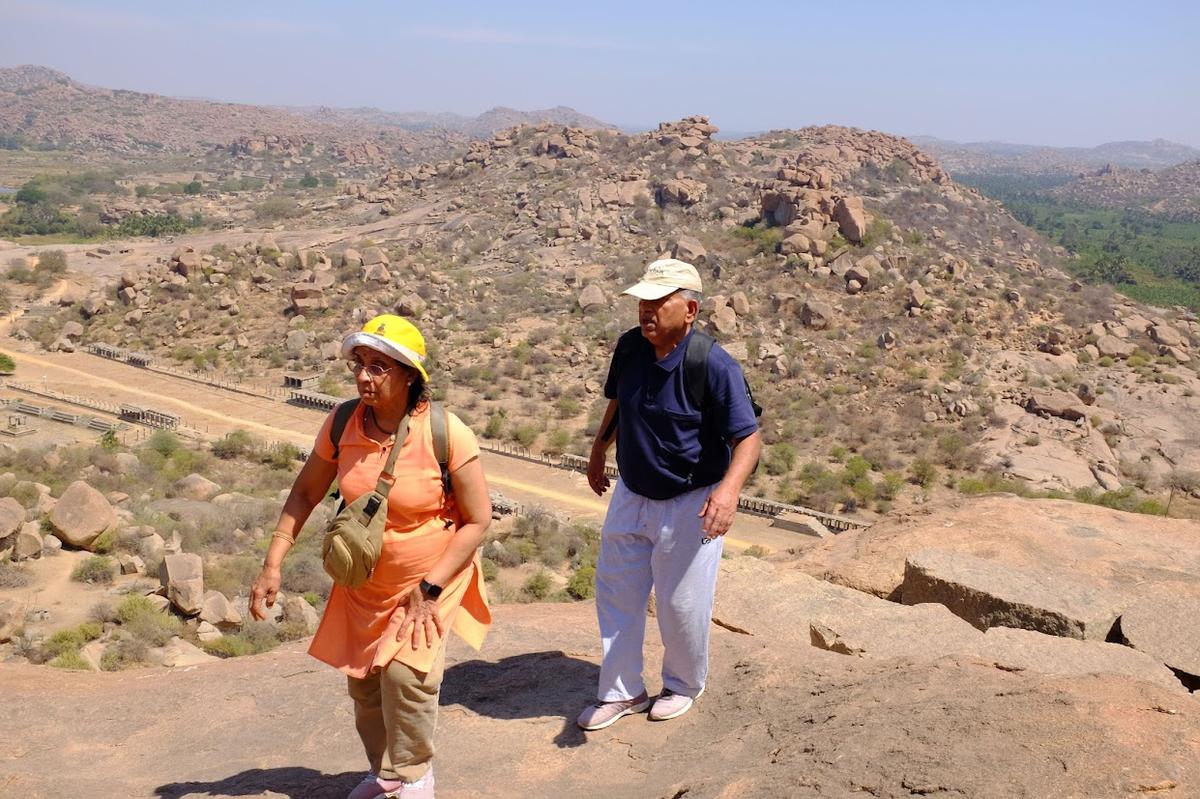[ad_1]
On a Sunday morning, a motley group of people — geologists, trekkers, professionals, students, parents with little children — gather in Hyderabad. Wearing caps, well-fitting shoes and carrying water bottles, they head out excitedly to meet their old friends, the rocks of Hyderabad.
The Society to Save Rocks (www.saverocks.org) has been organising these rock walks on the third Sunday of every month for 28 years now, with an aim to discover the city’s heritage rocks and explore new trails. But as the twin cities expand, these unique rock formations face the risk of being flattened out (an example is the rocks being drilled at Khajaguda Hills, despite a High Court order in 2019)
Inspiring octogenarian

Frauke Quader
| Photo Credit:
Special arrangement
Frauke Quader, the 86-year-old secretary of the Society, leads from the front the fight to preserve the heritage rocks. At her house in Jubilee Hills, a collage of rock photographs greets visitors at the door. “The city is growing, and we have to get used to it. But I get depressed with so much development,” says the octogenarian,
A trek to Bodagutta
| Photo Credit:
Society to Save Rocks
The Society conducts 12 rock walks a year and conducts an annual Rockathon (an adventure event to highlight the need for preserving rocks) in collaboration with The Great Adventure Club. The walk at Narsingi Forest Trek Park in January, marking a decade of the Rockathon, attracted around 150 people. The first Rockathon in 2014 had 100 visitors and increased to 500 participants in 2017, after which the numbers gradually dropped.
Frauke attributes the decline in numbers to the number of events happening during weekends in the city. “First, it’s already too hot. Second, people are going out more these days, but they prefer to go far away from the city.” Apart from adventure sports like rappelling and zip lining organised by The Great Adventure Club, the Rockathon’s less strenuous programmes like quiz contests, rock balancing, and painting for children, as well as one on snake awareness programme are popular among families.
Recreation zone
Rock trek
| Photo Credit:
Society to Save Rocks
Besides exploring incredible rockscapes, the rock walks — there have been 336 till now — are an interesting weekend recreation activity. Based in Bengaluru now, 70-year-old businessman Vinod Reddy has been part of rock walks for 18 years, including the two-day annual outstation rock walk to Hampi in Karnataka in February.
Bodagutta rock trek
| Photo Credit:
Society to Save Rocks
He began joining the walks to go out in the open air and meet people. He says, “I am completely fascinated by rocks; interacting with people like Frauke who shares so much information, makes me happy. How the rocks visited us millions of years ago and we blew them to smithereens in seconds is a sad story,” says the septuagenarian whose first rock walk was in 2004. and recollects his memories. “Society members Lata Marur (artist) and CJ Rao, rock walk lead and an organiser from the Society met at Public Gardens and we drove to some far-off place towards Ramoji Film City.”
Name board

Frauke Quader identifying the rocks in the photographs
| Photo Credit:
Special arrangement
Rocky terrain
Ghar e Mubarak, near Taramati Baradari,
Gandipet
Peerancheru rocks
Bodagutta
Keesaragutta
Bhongir
Durgam Cheruvu
Shamirpet
Devarakonda
Koilkunda
Moulali
Kohe Imam-e-Zamin (Ammuguda)
Fakruddingutta
Medak
HC University
The rock walks also help people discover local flora and fauna. “Some places like Ghar-e Mubarak, near Taramati Baradari, Fakruddingutta (Khajaguda) or Ammuguda are good for rock walks as they also have indigenous plants that need to be protected,” says the Society Vice President Sangeeta Varma. A message on name boards at these locations will be a first step, she observes. “A board informing that it is a protected area will let people know that it cannot be encroached.” Sangeeta also feels the moniker ‘city of rocks’ suits Hyderabad. “I think we should stop calling Hyderabad a city of pearls because neither the pearls are grown nor cultured here. Pearls come from various countries and are just strung here. It is in fact a city of rocks and lakes, rocks that are 2500 million years old. Try and make them inclusive instead of breaking them.”
Love of rocks

From the recent outstation rock walk to Hampi
| Photo Credit:
Society to Save Rocks
It has been a 24-year tryst with rocks for GRB Pradeep, a team lead at Don Bosco Network. He participated in rock walks for 14 years and led the group for ten years. Some walks have mixed groups, he says and gives an example. “Some first timers show keen interest but feel bored after visiting the site and say, ‘Emundi ikkada?’ (What is there here?)’. Thankfully, that number is small and we have enthusiasts who love the experience; some even feel so happy that break into a song,” he says.
The Society’s website carries info on its quarterly walks. If members suggest new areas with rocky terrain to explore, Pradeep and Sudheer Bhan, a speech therapist and the Society’s managing committee member, conduct a recce.
The rock walks in the city are free; often people use their own transport, others opt for a carpool and top up an equal amount for an outstation walk. Participants bring their lunch for longer, extensive treks; every walk ends with Osmania biscuits and Irani chai prepared by Frauke. The Nature trek’s uniqueness is to explore different trails to reach the site. “We are visiting the Kohe Imam-e-Zamin (Ammuguda) rock walk on March 17 for a fourth time (after COVID) but still feels new for members,” says Sangeeta. Agrees Pradeep, “Our trails are different and unknown to the general public.
The Society’s recent programmes such as an exhibition of rock paintings by students from SV College of Fine Arts in Madhapur at Hyderabad Literary Festival 2024, Ashok Vootla’s rock art photographs displayed at Ameerpet Metro station and keeping a stall at Earth festival organised by Jiddu Krishnamurti Centre are attempts to promote awareness of rocks, sustain the interest and build this community of rock lovers and protect the rock formations of Deccan Plateau.
[ad_2]
Source link




